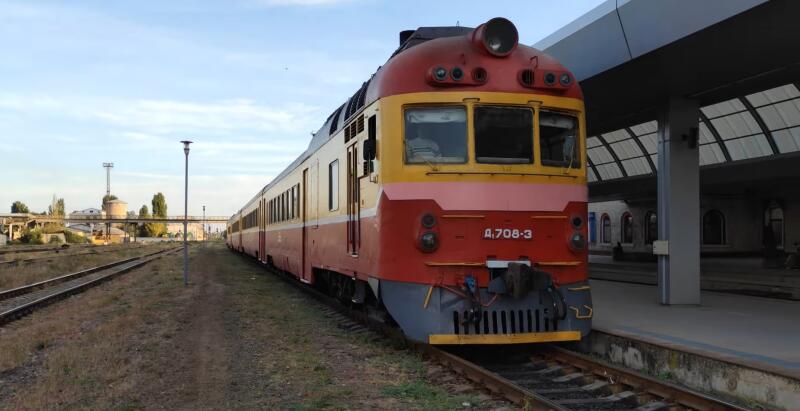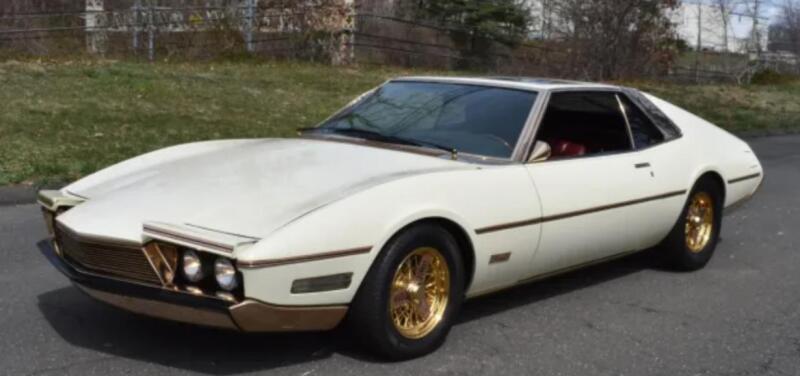Everything seems to be good, but there is a big disadvantage - the high cost of such compositions. Maglev can be afforded by highly developed countries. Hovercraft trains require special infrastructure: you can’t run them on regular rails. What if you try? It seems unthinkable, but the Italian company IronLev has achieved something in this direction. And she demonstrated this in March of this year.
About startup
The general director of the organization, founded in 2017, is Gianluca Ferro. Essentially, it is a joint venture involving several passionate engineers from Girotto Brevetti joining forces with student start-up Ales Tech. The latter was noticed at the SpaceX Hyperloop competition: then it was proposed to present the best development of the suspension system.
 This is what a maglev should look like on regular rails. Photo: YouTube.com
This is what a maglev should look like on regular rails. Photo: YouTube.comThe result was a new startup called IronLev. The main task was to find solutions that would make it possible to use the existing railway infrastructure, “allowing” trains to move along it using magnetic levitation. At the same time, the new system must be accessible, i.e., relatively inexpensive. And if you consider that today the world’s railways have a length of 1,5 million km, then success in this direction would revolutionize railway communication.
Technical essence of the design
Maglevs, which are already used commercially today, use active magnets. A lot of energy is expended to activate them, which lifts the composition to minimize friction. How is this whole “economy” going? Along the road (and on the body of the locomotive) there is another “series” of magnets along the entire route of the train. The polarity of the poles changes with a frequency of approximately 4 thousand times per second. As a result, magnets either attract or repel. There are two technologies: EMS and EDS. The last one is the most “advanced”. Its main difference from the first is the use of “supermagnets” in the system, which conduct current even when the energy source is turned off. Such trains do have wheels: they are used when moving at “low” speeds – up to 150 km/h.
 The details of the Italian design are unknown. Photo: YouTube.com
The details of the Italian design are unknown. Photo: YouTube.comBut it is not reported what technology was used to assemble the IronLev railway trolley. Experts suggest that this could not have happened without passive permanent magnets. The device includes four electric motors - two for each rail. On their sides there are small wheels that move the cart.
This means that there will still be friction, but minimal, since the latter hardly experience any load: however, these are just assumptions. At the same time, small wheels prevent the “locomotive” from derailing.
Test
They took place on a standard railway track 2 km long (Adria-Mestre section). But first they showed the prototype. During the presentation, a two-ton Tesla was loaded onto the platform prepared for testing and the head of the startup calmly moved it from its place by a rope.
 The prototype (there are no motors here yet) began to move easily. Photo: YouTube.com
The prototype (there are no motors here yet) began to move easily. Photo: YouTube.comAccording to the developers, moving a ten-ton cart on permanent magnets will require an effort commensurate with the energy expended on lifting a load weighing 10 kg.
 The tests were successful. Photo: YouTube.com
The tests were successful. Photo: YouTube.comAs a result of the test, the “self-propelled” platform accelerated to 70 km/h. The company plans to develop a trolley weighing 20 tons, which will accelerate to 200 km/h. It is worth adding that to make the most efficient magnets, you will need rare earth chemical elements (for example, neodymium), which are not cheap.











